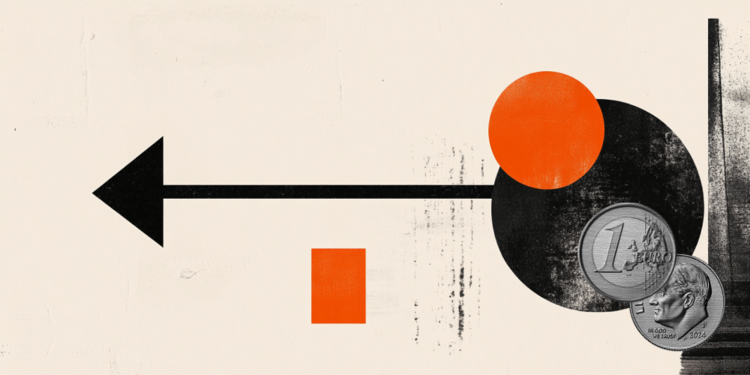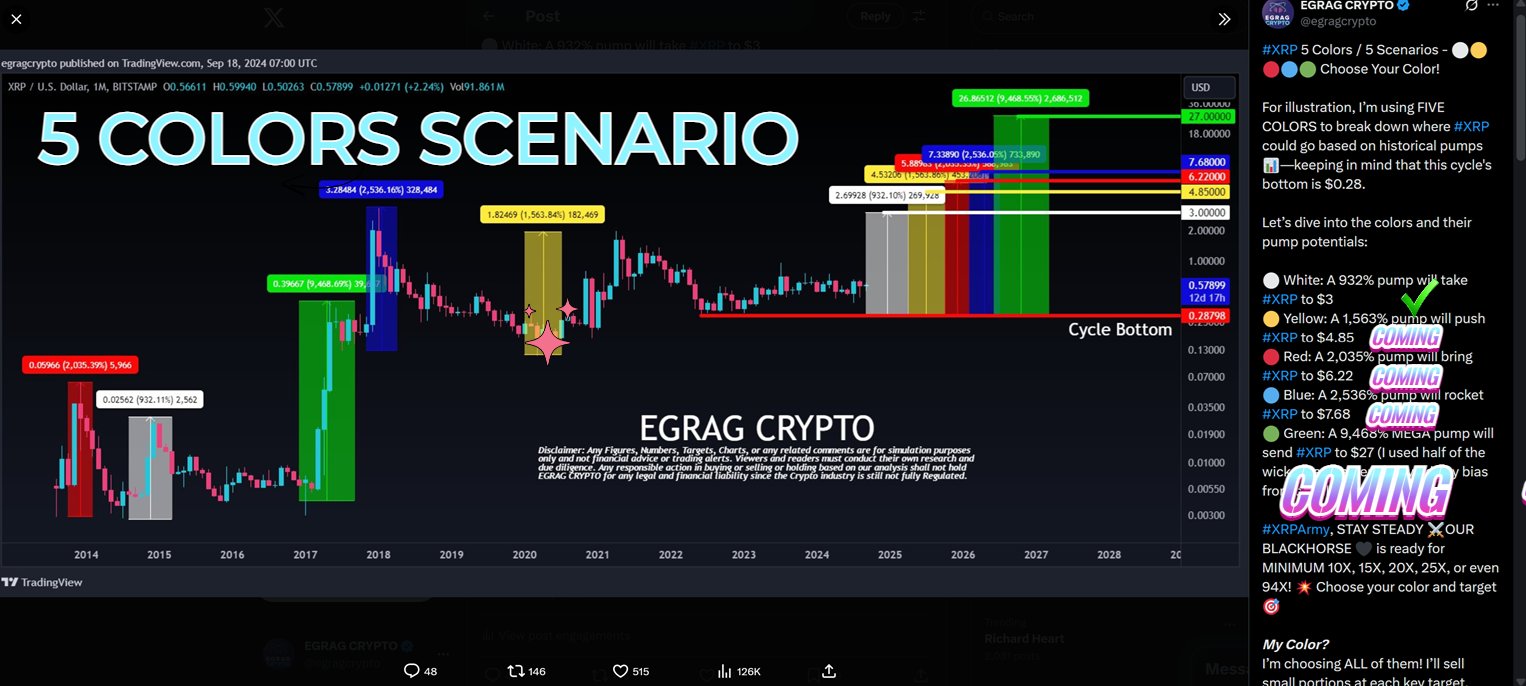Category: Forex News, News
Euro closes in on key resistance area
- EUR/USD trades in the positive territory above 1.0350 on Wednesday.
- January inflation data from the US will be watched closely by market participants.
- The near-term technical outlook points to a bullish tilt.
EUR/USD gained traction in the second half of the day on Tuesday and rose more than 0.5%. The pair trades marginally higher on the day above 1.0350 in the European session on Wednesday and the technical outlook points to a buildup of bullish momentum.
Euro PRICE This week
The table below shows the percentage change of Euro (EUR) against listed major currencies this week. Euro was the strongest against the Japanese Yen.
| USD | EUR | GBP | JPY | CAD | AUD | NZD | CHF | |
|---|---|---|---|---|---|---|---|---|
| USD | -0.39% | -0.36% | 1.44% | 0.12% | -0.08% | 0.36% | 0.24% | |
| EUR | 0.39% | 0.10% | 1.97% | 0.62% | 0.30% | 0.84% | 0.70% | |
| GBP | 0.36% | -0.10% | 1.70% | 0.49% | 0.20% | 0.74% | 0.60% | |
| JPY | -1.44% | -1.97% | -1.70% | -1.35% | -1.44% | -1.07% | -1.17% | |
| CAD | -0.12% | -0.62% | -0.49% | 1.35% | -0.17% | 0.21% | 0.08% | |
| AUD | 0.08% | -0.30% | -0.20% | 1.44% | 0.17% | 0.54% | 0.38% | |
| NZD | -0.36% | -0.84% | -0.74% | 1.07% | -0.21% | -0.54% | -0.13% | |
| CHF | -0.24% | -0.70% | -0.60% | 1.17% | -0.08% | -0.38% | 0.13% |
The heat map shows percentage changes of major currencies against each other. The base currency is picked from the left column, while the quote currency is picked from the top row. For example, if you pick the Euro from the left column and move along the horizontal line to the US Dollar, the percentage change displayed in the box will represent EUR (base)/USD (quote).
In the absence of high-impact data releases, the modest improvement seen in market mood made it difficult for the US Dollar (USD) to find demand on Tuesday, helping EUR/USD push higher. Meanwhile, Federal Reserve (Fed) Chairman Jerome Powell refrained from providing any fresh hints regarding the policy outlook.
While testifying on the semi-annual Monetary Policy Report before the Senate Banking Committee on Tuesday, Powell reiterated that they do not need to be in a hurry to adjust the monetary policy. “The US is economy strong overall; inflation is closer to 2% goal but still somewhat elevated,” he added.
Later in the day, the US Bureau of Labor Statistics will publish the Consumer Price Index (CPI) data for January. Markets expect the core CPI, which excludes volatile food and energy prices, to rise 0.3% on a monthly basis. A print above the market consensus could weigh on risk mood and boost the USD with the immediate reaction, forcing EUR/USD to reverse its direction. On the other hand, a softer-than-forecast monthly core inflation reading could allow the pair to build on Tuesday’s gains.
Powell will testify before the House Financial Services Committee on Wednesday but he is likely to read the same exact statement from the first day of his testimony.
EUR/USD Technical Analysis
The Relative Strength Index (RSI) indicator rose to 60 and EUR/USD closed the last three 4-hour candles above the 200-period Simple Moving Average (SMA), reflecting an increasing buyer interest.
EUR/USD could face stiff resistance at 1.0390-1.0400 (100-period SMA, Fibonacci 50% retracement of the latest downtrend) ahead of 1.0440 (Fibonacci 61.8% retracement) and 1.0500-1.0510 (round level, Fibonacci 78.6% retracement).
On the downside, first support area could be spotted at 1.0290-1.0300 (Fibonacci 23.6% retracement of the latest downtrend, round level) before 1.0250 (static level) and 1.0200 (round level, static level).
Euro FAQs
The Euro is the currency for the 19 European Union countries that belong to the Eurozone. It is the second most heavily traded currency in the world behind the US Dollar. In 2022, it accounted for 31% of all foreign exchange transactions, with an average daily turnover of over $2.2 trillion a day. EUR/USD is the most heavily traded currency pair in the world, accounting for an estimated 30% off all transactions, followed by EUR/JPY (4%), EUR/GBP (3%) and EUR/AUD (2%).
The European Central Bank (ECB) in Frankfurt, Germany, is the reserve bank for the Eurozone. The ECB sets interest rates and manages monetary policy. The ECB’s primary mandate is to maintain price stability, which means either controlling inflation or stimulating growth. Its primary tool is the raising or lowering of interest rates. Relatively high interest rates – or the expectation of higher rates – will usually benefit the Euro and vice versa. The ECB Governing Council makes monetary policy decisions at meetings held eight times a year. Decisions are made by heads of the Eurozone national banks and six permanent members, including the President of the ECB, Christine Lagarde.
Eurozone inflation data, measured by the Harmonized Index of Consumer Prices (HICP), is an important econometric for the Euro. If inflation rises more than expected, especially if above the ECB’s 2% target, it obliges the ECB to raise interest rates to bring it back under control. Relatively high interest rates compared to its counterparts will usually benefit the Euro, as it makes the region more attractive as a place for global investors to park their money.
Data releases gauge the health of the economy and can impact on the Euro. Indicators such as GDP, Manufacturing and Services PMIs, employment, and consumer sentiment surveys can all influence the direction of the single currency. A strong economy is good for the Euro. Not only does it attract more foreign investment but it may encourage the ECB to put up interest rates, which will directly strengthen the Euro. Otherwise, if economic data is weak, the Euro is likely to fall. Economic data for the four largest economies in the euro area (Germany, France, Italy and Spain) are especially significant, as they account for 75% of the Eurozone’s economy.
Another significant data release for the Euro is the Trade Balance. This indicator measures the difference between what a country earns from its exports and what it spends on imports over a given period. If a country produces highly sought after exports then its currency will gain in value purely from the extra demand created from foreign buyers seeking to purchase these goods. Therefore, a positive net Trade Balance strengthens a currency and vice versa for a negative balance.
Written by : Editorial team of BIPNs
Main team of content of bipns.com. Any type of content should be approved by us.
Share this article:










